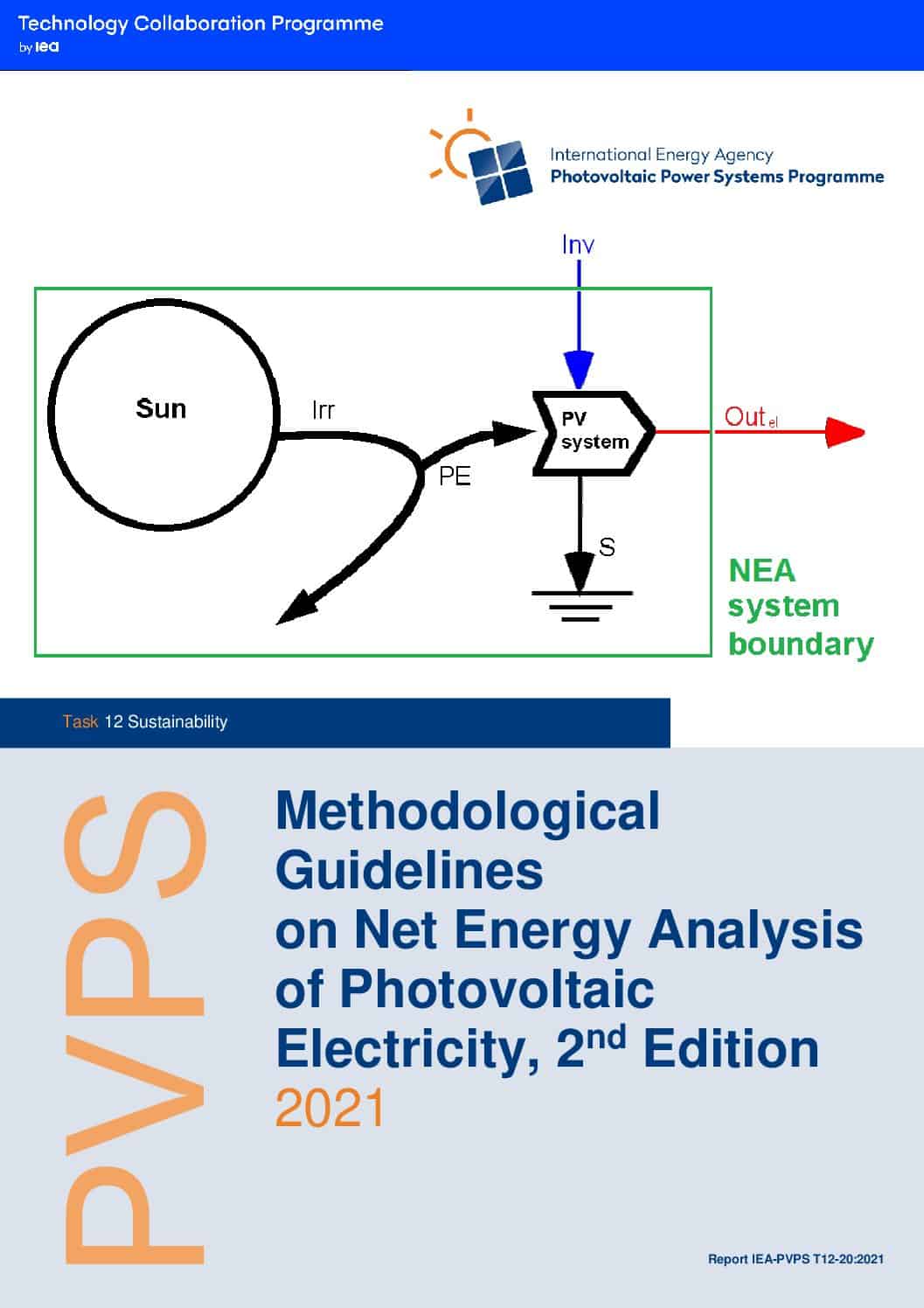Net Energy Analysis (NEA) is a structured, comprehensive method of quantifying the extent to which a given energy source is able to provide a net energy gain (i.e., an energy surplus) to the end user, after accounting for all the energy losses occurring along the chain of processes that are required to exploit it (i.e., for its extraction, processing and transformation into a usable energy carrier, and delivery to the end user), as well as for all the additional energy ‘investments’ that are required in order to carry out the same chain of processes. However, this general framework leaves the individual practitioner with a range of choices that can affect the results and thus, the conclusions of a NEA study. The current IEA PVPS guidelines were developed to provide guidance on assuring consistency, balance, and quality to enhance the credibility and reliability of the results from photovoltaic (PV) NEAs. The guidelines represent a consensus among the authors – PV NEA experts in North America and Europe – for assumptions made on PV performance, process inputs and outputs, methods of analysis, and reporting of the results.
Guidance is given on photovoltaic-specific parameters used as inputs in NEA and on choices and assumptions in inventory data analysis and on implementation of modelling approaches. A consistent approach towards system modelling, the functional unit, the system boundaries and allocation aspects enhance the credibility of PV electricity NEA studies and enables balanced NEA-based comparisons. Specifically, “apples-to-oranges” comparisons of different energy carriers (e.g., fuels vs. electricity) are not methodologically sound and are to be avoided in all cases; also, any comparison across renewable and non-renewable electricity generation technologies must clearly point out the intrinsically short-term nature of the NEA viewpoint, which does not capture the long-term sustainability implications of renewable vs. non-renewable primary energy harvesting and use: non-renewable primary energy resources are depleted and finally exhausted (irrespective of the size of the EROI), while renewable primary energy resources are not.
This document provides an in-depth discussion of a common metric of NEA, namely the energy return on investment (EROI), and how this is to be interpreted vis-à-vis the deceptively similar-sounding metrics in the field of Life Cycle Assessment (LCA): cumulative energy demand (CED) and non-renewable cumulative energy demand (nr-CED) per unit output. Specifically, a number of key differences are highlighted between these metrics as applied to electricity production systems, which are listed in Table S-1 (in the document).
Transparency in reporting is of the utmost importance as parameters vary with geographical zones, and a system’s boundary conditions and modelling approach can affect the findings significantly. Reporting of items 1 to 16 below is considered mandatory. The list of items is separated into key parameters required in both the captions of figures and tables showing the results of the NEA and in the NEA report (items 1 to 6), and further important aspects which should be documented elsewhere in the NEA report. Key parameters that should be documented in captions of figures and tables:
- PV technology (e.g., single and multi-crystalline silicon, cadmium telluride (CdTe), copper indium gallium diselenide (CIGS), amorphous silicon, micromorphous silicon);
- Type of system (e.g., rooftop, ground mount, fixed tilt or tracker);
- Module-rated efficiency and degradation rate (if not included in performance ratio);
- Lifetime for both PV modules and balance of system (BOS);
- Location of installation; and
- Annual irradiation level and the system’s performance ratio (PR), and the expected annual electricity production at the given orientation and inclination.
Other important aspects that should be documented in an NEA report:
- Place/country/region of electricity production modelled;
- Time-frame of data used in the analysis;
- Whether EROIel (EROI in terms of electricity) or EROIPE-eq (EROI in terms of equivalent primary energy) is calculated, and if the latter, the assumed electricity mix or technology/-ies and thus resulting grid mix’s or technology’s/-ies’ efficiency;
- Goal of the study;
- System boundary;
- Approach used if not process-based (e.g., environmentally extended input-output tables, hybrid analysis);
- LCA database(s) (e.g., Ecoinvent, GaBi, ELCD, etc.) and version used (if applicable);
- LCA software tool (e.g., SimaPro, GaBi, OpenLCA, etc.) and version used (if applicable);
- Primary energy factors applied and approach used; and
- Any major assumptions made about the production of input materials.
